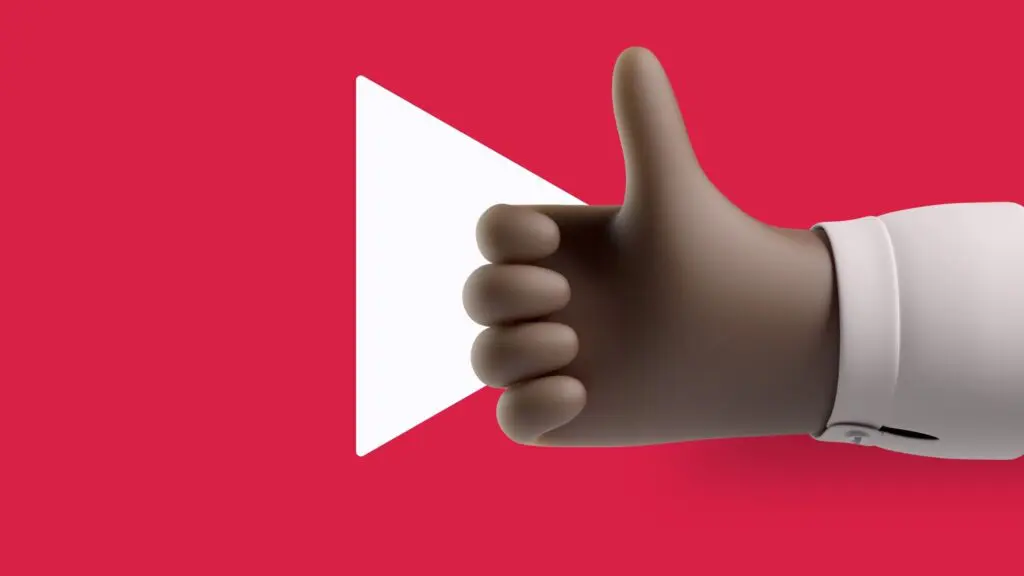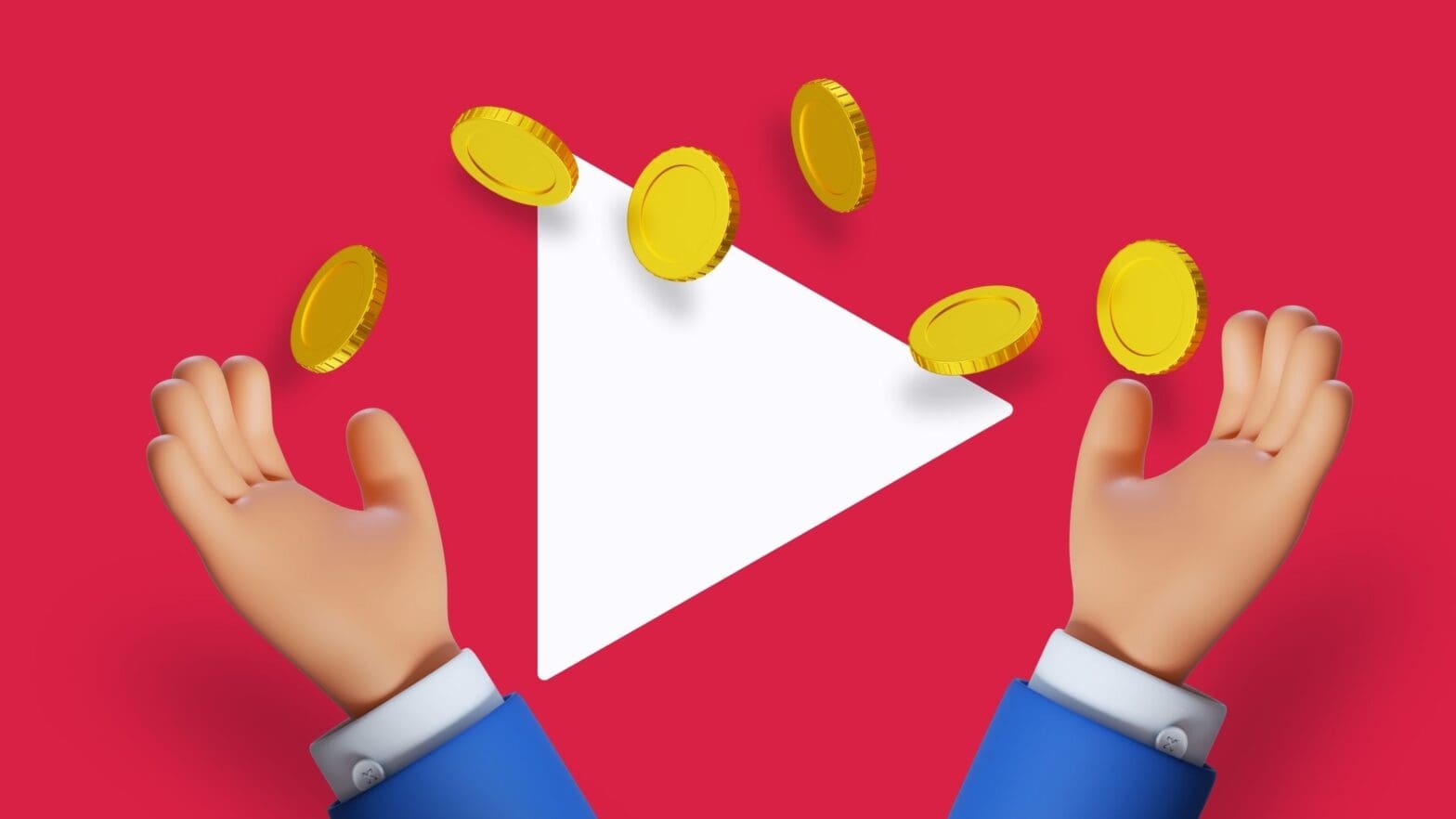How much do YouTube creators make per view? What is the average CPM on YouTube? More important for creators, what’s the average YouTube RPM – revenue per mille (thousand)? Let’s break it down.
Every YouTube creators wants to get access to the YouTube Partner Program (YPP). Once creators reach 1,000 subscribers and 4,000 hours of watch time (or 10M shorts views in three month), they’re eligible for the YPP and a share of the revenue from all YouTube ads that run against their videos.
It’s the big question all aspiring creators ask:
How much money do you get paid per view on YouTube?

In this post, we’ll break down the science behind the revenue share from AdSense. But first, let’s clarify some of the terms used about YouTube monetization that you may have heard:
CTR – click through rate
The CTR refers to how many users view an ad versus how many users actually click on the ad.
CTR = (# of Clicks / # of Views/Impressions) x 100.
CPM – cost per mille
Mille is a Latin for thousand. Fancy! No one says “cost per mille” though. It’s just cost per thousand. CPM is what advertisers pay per 1,000 impressions.
CPM = (Total cost / Total number of impressions) * 1,000
RPM – revenue per mille
RPM is the creator’s cut of CPM. e.g., what a creator earns per 1,000 ad views. According to Google, RPM is based on several different revenue sources, including ads, channel memberships, YouTube Premium revenue, Super Chats, and Super Stickers.
RPM = earned revenue on YouTube x 1,000 / total number of views
CPC – cost per click
This is the cost per person who clicked (or tapped) on the ad. Where CPM is about exposure, CPC is about action.
CPC = Total cost / Total number of clicks.
CPV – cost per view
This is the cost per time every time the ad was viewed.
CPV = Total cost / Total views.
NOTE: It’s really important to understand that if you’re eligible to earn a share of AdSense on your channel, YouTube pays creators for ad views and not total views. For any views generated, YouTube gives creators the majority share: 55% and takes the remaining 45% share. YouTube has paid over $70 billion to creators of all stripes over just the past three years.
YouTube pays creators for ad views, not total views.
Before we get to the heart of the matter, it’s important to note: there is no official position on CPM for creators.
The AdSense business model is auction-based, it changes by the second; advertisers are effectively bidding against keywords on ad inventory, and many of these keywords are worth much more than others depending on the video category, location, and amount of competition.
Therefore, some YouTube content niches — where keywords are in high demand — are more profitable for creators than others. See our list of the 15 most profitable YouTube niches for more on that.
The calculation isn’t as simple as creators getting 55% of whatever CPM an advertiser pays. What follows is speculative. Based on our experience and expertise on YouTube and across content generally… but your mileage (and your earnings) may vary.

How Much Money Do You Get Per View on YouTube?
There are a number of variables to consider when it comes to how much money you get paid per average ad view. Factors such as your channel and video category, audience type, location, the time of year, and the length of your content all play a part.
There are two distinct metrics we need to be aware of when calculating how much money can be made from AdSense.
CPM – what advertisers pay for 1,000 ad views
CPM stands for “cost per 1000 impressions.” Advertisers bid on a price to run ads and pay each time their ad appears. According to a report from eMarketer, YouTube’s CPM ranged from $13.03 to $15.34 per 1,000 views between Q4 2022 and Q4 2023.

RPM: what creators earn per 1,000 views
RPM gives YouTubers an accurate amount for how much they will be paid for ads that run on, in, or around their content. Creators should note that the number will be lower than the CPM as YouTube will deduct its 45% share before passing on the financial benefit to the channel.
According to Thinkific, YouTube creators can expect to make around $5-7 per 1,000 ad views. For every million views your videos receive, potential earnings would likely range somewhere between $1,200 to $6,000, considering all factors. YouTube offers more advice on the RPM metric here. Remember that the average RPM differs from niche to niche.

How to increase your YouTube RPM
In the most basic terms. a high RPM depends on how much Google gets paid from advertisers for particular keywords. However, as a creator, your RPM depends on a number of factors, so consider these as you are creating and optimizing your content so you are generating the most RPM that you can:
Use in-demand keywords in your titles and descriptions
Advertisers will pay more on content based on keywords that are in demand, so if you create a video around a specific topic, don’t forget to include the main keywords in your title and throughout your description. Make it easy for YouTube to put you and the advertiser together by clarifying what your content is all about.
TubeBuddy SEO Studio and Keyword Explorer can help here.
You can take this a step further and take a deep dive into your analytics, as well as analyze current trends so you can optimize your content based on the keywords where advertisers are bidding high.
Higher ad CPMs result in higher creator RPMs. However, your content has to reflect the topic. Don’t try and game the system by optimizing for keywords that have nothing to do with the video you’ve just published. That’s just going to backfire.
Higher ad CPMs result in higher creator RPMs.
Create longer videos
While Shorts has set the platform on fire, YouTube still rewards creators who keep viewers watching and engaging for as long as possible.
Creating longer videos doesn’t mean padding out your content. Long videos need to be engaging throughout. That said, see if you can comfortably create videos that are over seven or eight minutes long to see what that does to your RPM. Longer videos also allow you to insert more breaks for mid-roll ads, increasing your potential to earn more revenue. If you qualify to join the YouTube Partner Program, don’t forget to turn monetization on for all eligible videos and start earning a share of the advertising revenue on offer today.
Special Creator Day live stream
📅 April 23, 2024
⏰ 6 – 7:30pm PST
What’s next in creator tech? Join BENlabs CEO Ricky Ray Butler, host Judah Lee, and creators King Bach, Hannah Stocking, and Kris London for a special Creator Day event, streaming live from LA.
